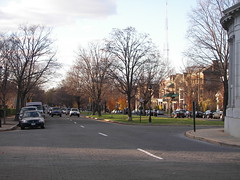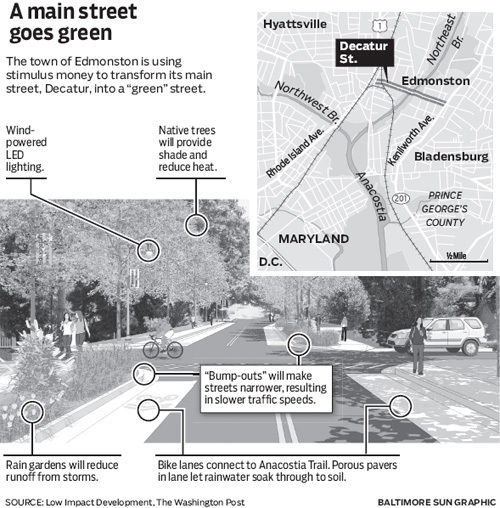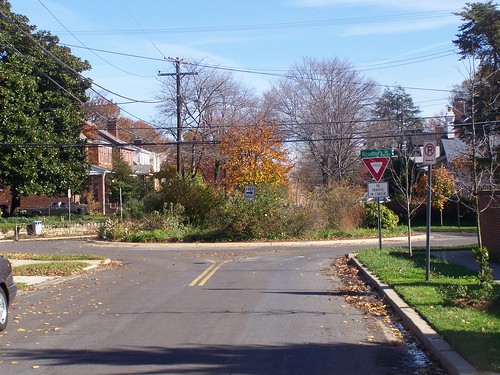It's all relative: conditions shaping road speeds and safe, comfortable places
There is a paper out from the University of Connecticut on "Designing Roads that Guide Drivers to Choose Safer Speeds;" by John N. Ivan, Norman W. Garrick, and Gilbert Hanson, University of Connecticut, Connecticut Transportation Institute; for Connecticut Department of Transportation; JHR 09-321 Project 04-6. November 2009
From the summary:
"This report describes an investigation into whether or not physical characteristics of the roadway and the roadside environment are associated with actual vehicle running speeds, and how actual vehicle running speeds are associated with the occurrence and severity of motor vehicle crashes in conjunction with other roadway and roadside characteristics.
"Actual vehicle running speeds were observed at about 300 locations in urban, suburban and rural areas across Connecticut, at locations without horizontal curves or traffic control devices. Only vehicles traveling through the section unimpeded either by leading or turning vehicles were observed in order to get true free flow traffic speeds. Roadway and roadside characteristics were observed, and statistical prediction models were estimated to learn more about how free flow vehicle speed, roadway and roadside characteristics and crash incidence and severity are related. The factors associated with higher average running speeds are wide shoulders, large building setbacks and a residential location.
"The factors associated with lower average running speeds are on-street parking, sidewalks and a downtown or commercial location. These findings suggest that drivers slow down where the road feels 'hemmed-in' or there is noticeable street activity, and they speed up where the road feels 'wide open' or street activity is less noticeable. This finding is not surprising, but these relationships are quite strong in the observed data, and it is a useful result to isolate this short list of factors that are significantly correlated with actual vehicle running speeds.
"These findings demonstrate that through careful, intentional selection of roadway and roadside design elements, it is possible to influence the running speed of traffic on a road. It appears that drivers indeed take cues from elements of the roadway and roadside environment to decide how fast to drive and these cues are independent of the posted speed limit and other considerations that might be important to the community for reducing speeds.
"So the good news is that it is possible to influence drivers' choice of speed through design of roadway and roadside elements; but the bad news is that many existing roads cue drivers to travel much faster than the posted speed limit and the community would like."
The point about relativity is this. The study compared suburban styled streets to center city and town styled (urban) streets. And people don't drive as fast in the city compared to the roads they studied, true.
But people still drive plenty fast in the city, at speeds that are inappropriate in the context (residential streets, commercial districts, etc.), and there needs to be a more significant research focus on this particular problem.
The issues are pretty much the same. Roads are engineered to allow high speeds regardless of the context or posted limit. In other words, all roads in cities are mostly paved to the same standards, whether or not the posted speed is supposed to be 15 mph or 50 mph. And this allows for high speeds.
This is one of the reasons why I am a big proponent of the use of Belgian block (or how 7th Street SE has been reconstructed adjacent to Eastern Market) the predominant pavement on city streets, especially around parks and circles, schools, libraries and other civic buildings, and in neighborhood commercial districts.

7th Street SE in front of Eastern Market.
The block in front of Eastern Market is closed to automobile traffic on the weekends (which is still controversial to the merchants). This makes me realize that in the restoration of the 700 block of C Street SE as a through street, which will happen with the redevelopment of the Hine School site ("Stanton-EastBanc Will Develop Former Hine School Site" from the Washington City Paper), that we should have that street constructed with pavement similar to that on 7th Street SE.

Monument Avenue in Richmond, Virginia.
Belgian block provides better visual, aural, and physical cues to drive slower and could and should be more widely deployed to bring about context-sensitive and attractive traffic calming within neighborhoods, commercial districts, and other places in the city.
Also see:
-- We can Rebuild our roads, but we need to broaden our focus, and (re)build a better transportation system -- which discusses in part Missouri's road building philosophy of "good enough" but in the urban context
-- (Sub)Urban Driving Manifesto -- which discusses in part how the environment is managed within Graz, Austria, where there are only two posted speed limits 30 kph and 50 kph, that's 18.6 and 31 mph respectively.
Relatedly, the Town of Edmonston just had an inauguration of their "green street" project. See "Remaking Main Street" from the Baltimore Sun and "Prince George's hamlet gets high-profile help with 'green' project" from the Washington Post.
It's a form of traffic calming too, but rather than a speed pimple (bump or hump) the overall environment is constructed in a way that achieves multiple objectives concerning improvement of place, including slowing down the prevailing speed of automobiles and other vehicles.

Graphic from the Baltimore Sun.
From the Baltimore Sun article:
This little town in the paved-over heart of suburban Washington, where cows grazed long ago, is "greening" its main street — showing what Baltimore and other cities in the region may need to do to help save the Chesapeake Bay.
In a bid to make the working-class community of 1,500 more walkable and environmentally friendly, Edmonston has begun a $1.1 million makeover of busy Decatur Street, narrowing the two-lane residential thoroughfare to make room for pollution-absorbing trees and grasses, a bike lane and energy-efficient, classic-looking street lamps to be run on wind power purchased from out of state.
"Our priority is to redefine the American main street and get it from top to bottom as sustainable and community-oriented as possible," explained Adam Ortiz, the town's part-time mayor. He and other town officials celebrated Tuesday the recent launch of construction work by showing it off to state and federal officials, including Environmental Protection Agency Administrator Lisa P. Jackson.

This neighborhood street roundabout on Fern Street in Silver Spring is another urban design/placemaking strategy. (Seattle does the same kind of thing, but with much smaller median circles.)
Labels: car culture and automobility, transportation planning, urban design/placemaking



0 Comments:
Post a Comment
<< Home